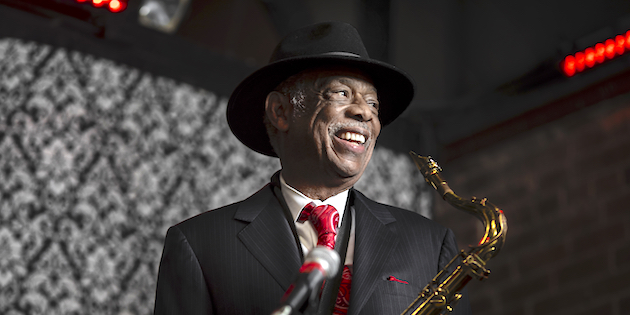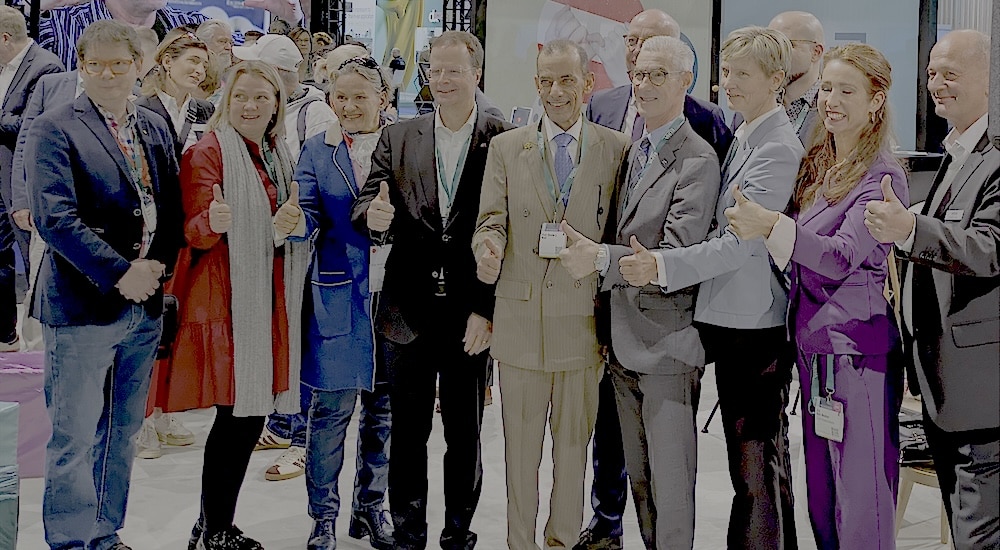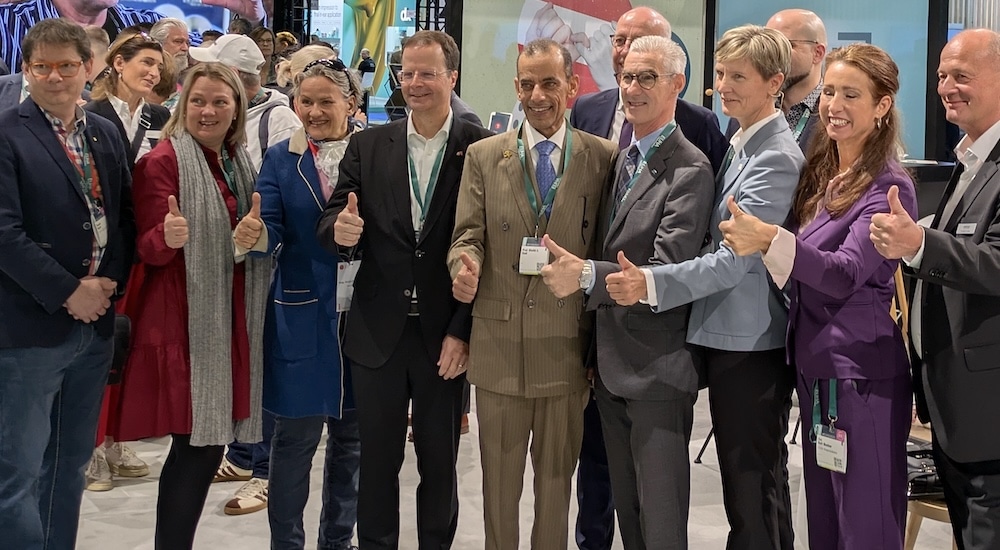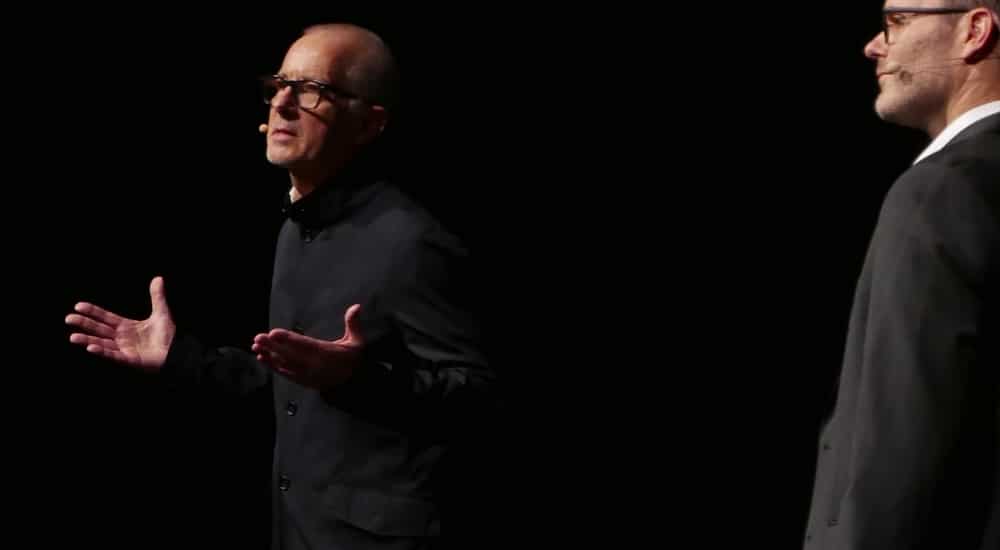A jazz fitting for La La Land saxophonist Charles Owens
music
Saxophonist Charles Owens' 82-year-old ears have been sung into at soulful point blank range by Marvin Gaye. They were blown into with restless energy by trumpet master Miles Davis, and virtuosically vibrated night after night on tour by the eccentric Frank Zappa. For his hearing loss, only a jazz fitting will do.

By Peter Wix
Keeping Owens' ears hearing is more than just keeping the man communicating; it is a legacy mission that, for the past twenty years or so, since he first became aware of his loss, has imbued kick and purr into a human conduit chanelling the language of legendary bebop cats of the past to the future of their music, jazz. His hearing aid—today he uses a Phonak Marvel— has kept this sax player going long enough not only to pass on the right notes to young, promising jazz students at the University of California, Los Angeles, but to figure in the 2016 Hollywood film, La La Land, winner of six oscars and the most widely-seen defence in decades of the devil's well-chosen music.
In December, Charles was back in front of the camera, being filmed in his chosen home city of Los Angeles, as the star of the latest film in the Life without Limitations series by Sonova, the Swiss hearing aid giant that has been picking up awards for this run of carefully directed and stylishly photographed and edited promotional shorts.

Diagnosis and solution – a jazz fitting
Charles Owens' hearing diagnosis is bilateral moderate to severe sloping sensorineural hearing loss with relatively strong speech discrimination. In the language of one of his jazz idols, Charlie Parker, that’s Bluest Blues and No Noise Parts I to III.
Without the dirtiest dive-bar shadow of a doubt, jazz is the heart and soul of Charles Owens, and his being able to hear the full spectrum of tone colour in what he and others are playing owes much to Ivan Wu, the audiologist who fitted his Phonak Marvel device at the Connect Hearing
practice in Encino, California, carrying out a "frequency-by-frequency, decibel-by-decibel" fitting, "yes, a jazz fitting because it is personalised," said Wu, regional director at Connect US.
For what Ivan calls a "puzzle with missing pieces, involving reverberation, distortion, and echoing", an approach was called for that dispensed with all preconceived boundaries. "Musicians are very very sensitive to the note, and the note is really based on frequency fine tuning," Wu says, adding, "before we audiologists have even touched the hearing aid, we have already convinced ourselves that there is not a whole lot more we can do."
But Ivan Wu asked himself: "Will I be able to cover the musical range Charles wants to hear but then not go over the boundary? I had to break the MPO (maximum power output) rule, not worry about compression and MPO too much, and then go back and give him the whole spectrum based on his feedback."

Audiologist, get in the groove
Ivan Wu stresses the need for hearing care professionals to adopt a mindset that "the hearing aid truly can create all possibilities".
"Unless we open our inner vision of what an instrument can do, the tuning part becomes meaningless," argues Ivan. "A lot of the time I think of myself as an artist, and my stage is when I’m doing fine tuning."
"Because I’m a supervisor, I encourage my staff by saying 'look, there is a piano tuner who comes to your house to tune your piano, but there is also a piano tuner for Carnegie Hall. Which one do you want to be?'"

No hearing, no bond with the audience
Buddy Rich, Mongo Santamaria, John Mayall, Juggy Jones, Barbra Streisand, B.B. King, Grover Mitchell, Clayton Hamilton, Bobby Hutcherson, Art Pepper,… on goes the list of artists whose work, live or recorded has been embellished by Charles Owens, whose ears, now improved by his binaural aids, have heard and communicated the sonic secrets of mainstream and experimental jazz and blues.
"All jazz musicians, I guess maybe even great classical singers, have their own sound eventually, and I can tell Gene Ammons by just one note, I can tell Clark Terry by just one note, I can know who Stan Getz is by just one note, I can tell Coltrane by his sound. You can tell Miles with his mute, immediately, piece of cake, no problem," says Charles.
"If I can’t hear myself I can’t communicate with the people. The sound is what connects me to the people. If it’s a small sound it might make people uncomfortable; if it’s a nice warm fat sound, it might make them sit back and want to listen, and want some more," points out this player of not only tenor, but also soprano sax, and flute.
When he plays, Charles needs to work in the space between the pole references of the "sizzling cymbals" and a clear low bass. "Probably the reason I am as deaf as I am is because I like to stand real close to the drums, and I like a loud drummer. The cymbals, that’s what turns me on: a good drummer that knows how to play those cymbals, hi-hat. And I like the low bass," he explains.
Did he ever lose the sense of those sound references? "No, because I lost my hearing but I could still hear myself over a period of time, and it didn’t get down to where I couldn’t hear, period. It never got so bad where I couldn’t hear myself."
Hearing loss : "Grandad, turn the TV down!"
Charles’ hearing aid experience has curved upwards in quality over the 20 or so years since the classic loss scenario of his family getting fed up with him turning up the television volume. What he has gained through what he calls his "Rolls Royce of hearing aids" goes beyond "making my family feel comfortable".
"It would be hard, you know: 'Can you say that again? What? What?’. Even just talking to my wife would be hard sometimes. And she’d get kind of disgusted at having to tell me things over and over and over, " Charles riffs.
If there had been no solution for Charles’ hearing loss, "my life would have been different, bitter-sweet, not hearing the stuff around me, and I’d just have to make the best of not being able to hear and accepting it. If I’d have got an implant and if that had been distorted, it wouldn’t have been as comfortable as having a nice hearing aid. Since I didn’t have to go through that, I can’t imagine being handicapped like that, but it is a handicap when you can’t hear, especially for a musician," he says.

The jazz thing in this "old time tenor player who loves every second of it", and who considers himself "very lucky to be part of the jazz tree in a small way", goes right back to one of those big jazz tree branches and the sound of a Bird, the legendary Charlie Parker, who played at his high school in San Diego. "I didn’t see him, but I was stood at the back and heard him; that’s pretty close."
When he was just ten-years-old, Owens had the fortune to travel to his stepfather's family and house full of musicians, where he tried out a variety of instruments. He returned home and announced he wanted to play the saxophone. An only child, he was lucky enough to get one. Several of his school friends also played sax—including Virgil Lane, the ˝real cool cat˝ friend he still stays in contact with after more than 70 years.
As he made his mark, early on in the Duke Ellington Orchestra (under the Duke’s son, Mercer), and later with the Buddy Rich Big Band, he built a reputation as a talented and reliable sax player, getting the call one day to record with Marvin Gaye on the Motown master’s 1978 Here, My Dear album. Gaye, despite being a consummate pianist and musician, just sang all the parts he wanted his session players to record. Later, Owens toured and recorded with Frank Zappa, who "played everybody’s part on his guitar"
There is a legacy of sounds up there in Charles Owen's cool and cultured auditory system, and that is what his hearing aids are keeping alive. For Charles, for us, and to pass on to his grandson, Charles Eric Williams, who has just started sax lessons with a grandad whose greatness, first as a person, secondly as a sax player, will be magical and blurred to the young lad, but clear and golden in the years to come. "I paid him $10 every time he practised, which made him look forward to it, but it’s also showing him that you can earn money after you learn this well enough, because grandpa did it his whole life, " says Charles. "But it also teaches him self-discipline, having to stop playing with his phone for a while!"
La La Land
Though he is not paid for his demanding, week-long shift in LA locations with the highly professional and splendidly-humoured Sonova film team, Owens' La La Land appearance did bring him some gratefully received bunce, a long-overdue boost in fame, and guaranteed audiences whenever he plays with the other La La Land musicians, at the Lighthouse Cafe, for instance, a key location in the hit movie.
"Somebody just called one day and said 'You’re Charlie Owens, aren’t you?' I said yes. He said 'be at the Lighthouse on the 12th and 13th of next month, we’re going to do some filming and we need you there.' I don’t know how I got that job, but it paid pretty well and I still get royalties from La La Land," he explained, with the air of a man who just found his saxophone was made of gold.
A simple but well-crafted film, La La Land is a story of dreams, the ultimate currency of much of Los Angeles—where even Uber drivers have produced movies, interesting flops, of course—and how those dreams don’t necessarily bring happiness. The film’s strength owes much to the solid performances of its romantic leads, Ryan Gosling (Drive, Blade Runner 2049) and Emma Stone. And Charles was mightily impressed with Gosling’s jazz chops and his professional decorum.
"He’s a cool cat! He’s just like a musician in the band. We were all surprised. Bijon Watson was the trumpet player. Bijon was right here and there’s a guy playing the piano facing us, and Bijon was blown away because he was so good, and I was too. Bijon said 'Man! You’re really a good piano player'," recounts Owens. "And he (Gosling) was happy to receive the compliment, and it wasn’t like a big star talking down to us, just cats having fun, enjoying the story, and living the life of jazz musicians. He was really nice."
"La La Land turned a lot of people on to jazz. After the movie came out, they had La La Land band night out there, and I was one of the guys in the movie, and we had a guitar player who had some scenes, and Nedra Wheeler who played bass, and you couldn’t get in the Lighthouse. One man walked up during the intermission and said ‘I’m not really that much of a jazz fan because I hadn’t heard any up until I saw La La Land, and I wanted to come out and enjoy jazz from now on'. So, the movie converted a lot of people and made them like jazz, " says Charles.

These past three or four years have worked well for this veteran saxophonist, and not only because he is able to hear the questions he is asked, and hear them perfectly. "The hearing aid made me feel whole again, made my family comfortable, and it’s just a blessing, flat out, and I wasn’t even aware of how blessed I was," says Charles, referring to the Phonak Marvel devices he wears binaurally.
But his new adventures in film have also helped to bring him the feeling that this is the best time in his life. "It feels like something special is happening, " he says. "Besides this old guy talking about his hearing aids and how much he likes them. It feels like something special; I don’t know what it is yet but we’ll find out in time."
"Well, I guess the best time in my life might be now,˝ says this saxophonist in his beautiful voice of fine-grained woods and time-buffed brass. "I don’t have to make money any more!" he jokes. Money, of course, is not the real story here, and he knows that you know it ain’t. Owens needs to communicate. He is communicative on the level that jazz is: intravenous sophistication; a cool surface above an engine room of experience taking just enough heat out of the turning gearwheels to make things swing. And then night time is the right time, and Hey! Ba-Ba-Re-Bop, a man can hear!
But through his hearing aid this man can also feel he has done good things and can still connect: to past glories, to present audiences. Through his ears and hearing apparatus, Charles can link his mind right back through all the sounds that have moved millions of people and stimulated so much of society to think beyond black and white notes and into the blue and the nuances. Charles Owens now experiences a sense of contentment, and that is what he projects around him, as he jokes in between take 11 and 12 for a scene in the Sonova Life without Limitations film, as he blows his horn at the Lighthouse Cafe, as he teaches his jazz students how to "listen to the drummer", as he passes on skills and, hopefully, a great mindset to his grandson. Spend ten minutes with Charles Owens, and you know instinctively how kind and humble a soul he is, but don’t begrudge him the right to believe it when he says: "I’m great. I know that now. If all those top people wanted me to play with them, I must be. I was already cool. I’m in rarefied air, man!"
Revised from original publication in Audio Infos #132 January 2020
 Sign in
Sign in

